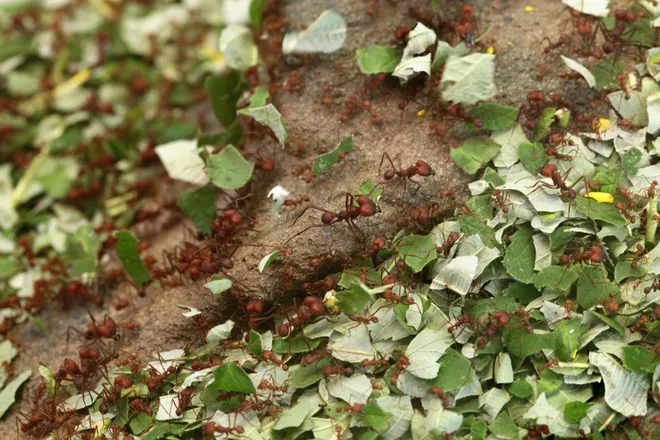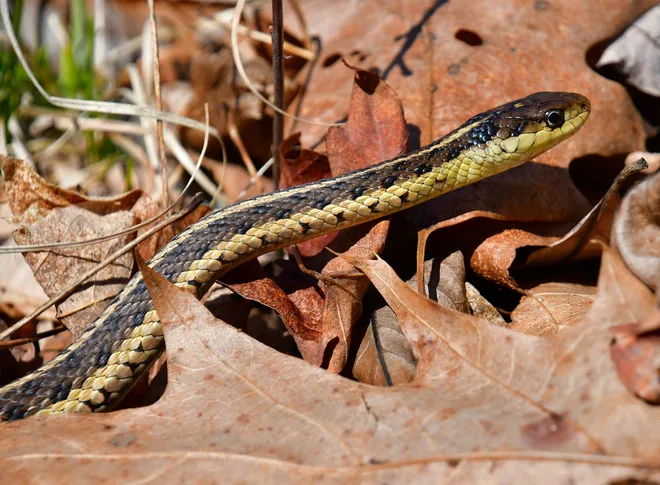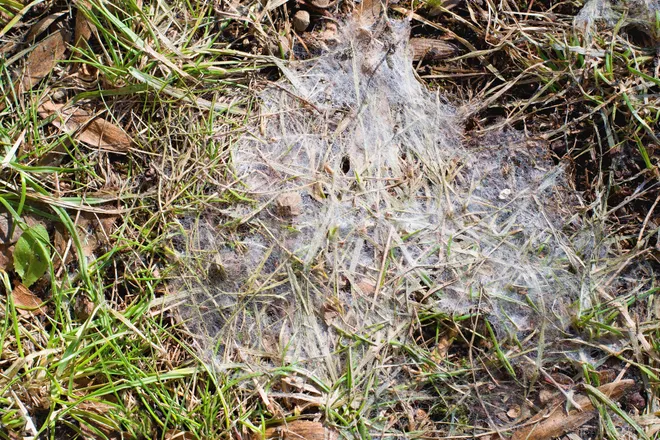Rake it or leave it? What gross stuff may be hiding under those piles on your lawn?
To rake or not to rake? The debate about what to do with those leaves building up on your lawn erupts anew each fall, with lawncare enthusiasts and environmentalists alike weighing in on the pros and cons of each.
While there are ecological benefits to letting your lawn go au natural, such as limiting greenhouse gas emissions from landfills and fertilizing soil, there is one major drawback for those not so fond of creepy crawlies - what's hiding in those piles.
Still deciding if it's better to leave your lawn or commit to total leaf destruction? Here's what to know about some of the things that can be hanging out in that pile.
Raking debate:Should I rake my leaves this fall? Experts say that's not always a good idea. Here's why.
Beetles, spiders and centipedes, oh my
The mounds of fallen leaves on your lawn can provide the perfect cover for creepy crawlies if they are left to pile high enough. Many of these insects are seeking the best digs in preparation for the winter, and the dark, damp, warm and food-rich heaps are the perfect spot for plenty of different species.
Some of the most common include ants, beetles, centipedes, millipedes, pillbugs, earwigs, spiders and ticks, according to Big Lakes Lawncare, Modern Pest Services and the Department of Entomology at Penn State. While some are harmless or even helpful besides being creepy, like centipedes, there are some you'd rather avoid, such as disease-carrying ticks.
That said, leaving a light smattering of leaves on your lawn can help maintain an environment that enables important cycles in our ecosystem, according to National Geographic.

Other wildlife like rodents and snakes
A few other types of wildlife generally considered undesirable are prone to hanging out in your leaves. This can include snakes, salamanders, box turtles, toads and rodents.
Attracted again by the shelter and warmth piles provide but also to the potential food source of the smaller creatures living inside, these creatures may not be the average homeowner's favorite to have around but can, again, serve important roles in maintaining the local ecosystem, says the Loudon Wildlife Society and the National Wildlife Federation.
If you can, leaving some leaves for some of these species like the box turtle and salamanders is beneficial. However, no one wants rodents prone to carrying disease slipping into their homes, so if you do choose to go light on the raking, consider making sure any piles or thicker coverings are farther away from your house.

Mold and fungus
Dark, damp, not often disturbed − a nice thick pile of leaves makes perfect sense as a prime growing spot for mold and fungi.
According to Big Lakes Lawncare, wet piles of leaves in colder environments can attract Microdochium nivale and Typhula incarnate, two types of fungi that cause snow mold. Snow mold is a fungal lawn disease that damages and kills grass, often creating pink or grey circles or patches. Besides being unpleasant to look at, it can cause allergies and asthma.

Other unwanted fungi that may lurk under leaf piles include Rhizoctonia leguminicola fungus, which turns grass brown, or red thread, a lawn disease caused by Laetisaria fuciformis, reports Homes and Gardens.
One of the best ways to avoid all of this? Don't let wet piles of leaves build up and sit on your grass for long periods of time.
Disclaimer: The copyright of this article belongs to the original author. Reposting this article is solely for the purpose of information dissemination and does not constitute any investment advice. If there is any infringement, please contact us immediately. We will make corrections or deletions as necessary. Thank you.





